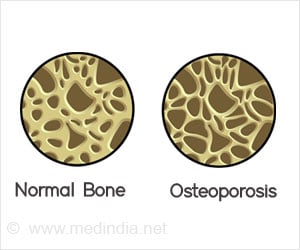A study says that the first tear duct implant developed to treat inflammation and pain following cataract surgery has been shown to be reliable.

After cataract surgery, most patients are prescribed topical eye drops to reduce ocular inflammation that often occurs after surgery, but many do not or are not able to comply with the recommended dosing regimen. To potentially eliminate the issue of compliance, patients who had received cataract surgery from four ophthalmology practices across the United States were selected to participate in this phase 2 study.
The researchers tested punctum plugs designed to deliver a sustained release anti-inflammatory pain medication (dexamethasone) to the eye over a period of 30 days following the removal of cataracts. After 30 days, the plug softens, liquefies and is cleared through the tear duct without the need for removal. The researchers concluded that when compared to a placebo, the dexamethasone punctum plug provides sustained reductions of inflammation and pain for up to one month following cataract surgery.
The 60 participants were randomly split into two groups, with one group of 30 patients receiving a placebo vehicle punctum plug and the other group of 30 patients receiving a dexamethasone-medicated punctum plug. At various points throughout the 30 days following cataract surgery the researchers assessed the number of patients in both groups with ocular inflammation (measured by the presence of anterior chamber cells in the treated eye) and pain.
They found that the medicated plug group had significantly less pain throughout the 30 days. On day one, the placebo group reported a mean ocular pain score more than three times higher than the medicated plug group. By day 14, the placebo group reported a mean ocular pain score 11 times higher than the medicated plug group, remaining at this level through the conclusion of the study.
Ocular inflammation in the medicated plug group was also significantly less than the placebo group throughout the 30 days. By day 14, more than 30 percent of patients in the medicated plug group showed no ocular inflammation, compared to just 3 percent in the placebo group. By day 30 of the study, over 60 percent of the patients in the medicated plug group had no signs of inflammation compared to 13 percent of patients in the placebo group.
Advertisement
"Most people who have cataract surgery are older and may have a difficult time adhering to a post-operative eye drop regimen for various reasons," says Thomas Walters, M.D., an ophthalmologist at Texan Eye in Austin, Texas and lead researcher for the study. "Getting eye drops onto the eye can be difficult for anybody, especially those who might have trouble holding the bottle or targeting the drops onto the eye. The punctum plug eliminates those variables and will make recovering from surgery far easier for cataract patients."
Advertisement
Evaluation of Sustained-Release Dexamethasone for Safety and Efficacy After Cataract Surgery in a Multicenter Study (PA004) was presented at AAO 2014, the 118th annual meeting of the American Academy of Ophthalmology in conjunction with the European Society of Ophthalmology, which is in session October 17-21 at McCormick Place in Chicago. More than 25,000 attendees and 620 companies from 123 countries gather each year to showcase the latest in ophthalmic education, research and technology. To learn more about the place Where All of Ophthalmology Meets, visit www.aao.org/2014.
About the American Academy of OphthalmologyThe American Academy of Ophthalmology, headquartered in San Francisco, is the world's largest association of eye physicians and surgeons, serving more than 32,000 members worldwide. The Academy's mission is to advance the lifelong learning and professional interests of ophthalmologists to ensure that the public can obtain the best possible eye care. For more information, visit www.aao.org. The Academy is also a leading provider of eye care information to the public. The Academy's EyeSmart® program educates the public about the importance of eye health and empowers them to preserve healthy vision. EyeSmart provides the most trusted and medically accurate information about eye diseases, conditions and injuries. OjosSanos™ is the Spanish-language version of the program. Visit /www.ojossanos.org to learn more.
Source-Eurekalert















